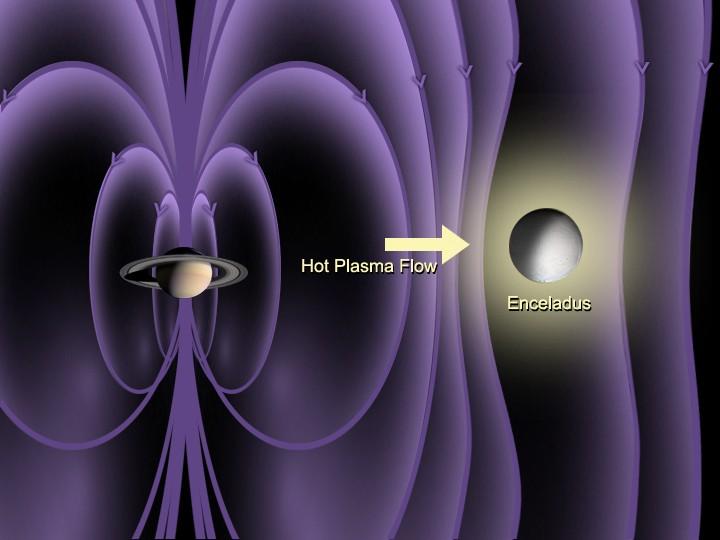Atmosphere on Enceladus

| PIA Number | PIA07370 |
|---|---|
| Language |
|
This artist concept shows the detection of an atmosphere on Saturn's icy moon Enceladus. The Cassini magnetometer instrument is designed to measure the magnitude and direction of the magnetic fields of Saturn and its moons. During Cassini's two close flybys of Enceladus -- Feb. 17 and March 9 -- the instrument detected a bending of the magnetic field around Enceladus.
The graphic shows the magnetic field observed by Cassini along its trajectory plotted in a vector form. Even though the spacecraft altitude was almost 500 kilometers (310 miles) at closest approach and the flyby was upstream of the moon (where the interaction is expected to be weaker) Cassini's magnetometer observed bending of the magnetic field consistent with its draping around a conducting object, which indicates that the Saturnian plasma is being diverted away from an extended atmosphere.
The Cassini-Huygens mission is a cooperative project of NASA, the European Space Agency and the Italian Space Agency. The Jet Propulsion Laboratory, a division of the California Institute of Technology in Pasadena, manages the mission for NASA's Science Mission Directorate, Washington, D.C. The Cassini orbiter was designed, developed and assembled at JPL. The magnetometer team is based at Imperial College in London, working with team members from the United States and Germany.
For more information about the Cassini-Huygens mission visit http://saturn.jpl.nasa.gov . The magnetometer team homepage is http://www3.imperial.ac.uk/portal/page?_pageid=488,2068521&_dad=portallive&_schema=PORTALLIVE .
Credit: NASA/JPL
